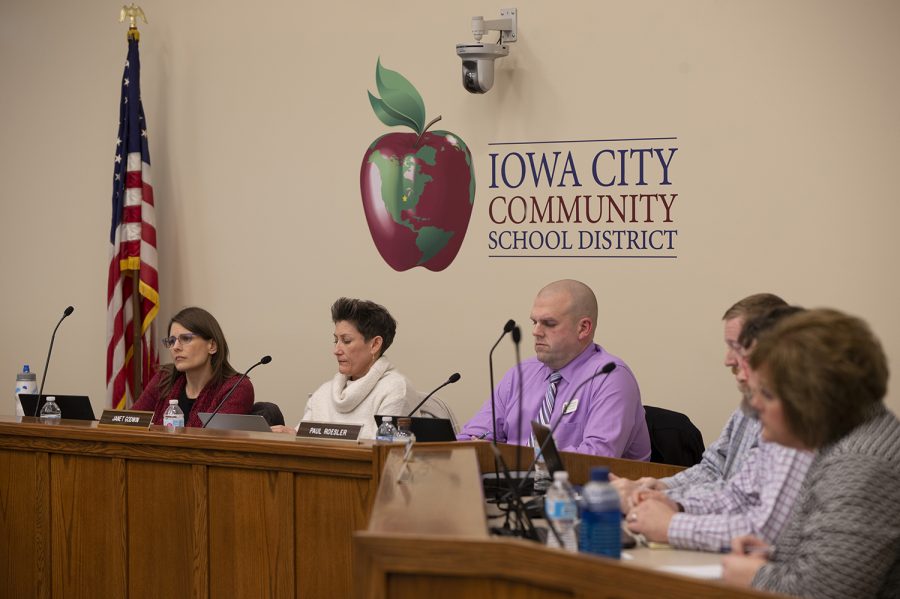Iowa City school board redraws boundaries for next fall
After months of discussion, school zones will be reshuffled in the Iowa City district to balance demographics and create a more equitable learning system.
School Board members listen as people raise concerns about school rezoning at the School District Administration Building on Tuesday. At the meeting, board members voted to redraw school zones in an effort to create a more equitable learning system.
November 28, 2018
Both approval and apprehension rippled across the faces of onlookers Tuesday night as members of the Iowa City School Board voted to redraw school boundaries in an attempt to increase diversity among elementary schools.
The board members had deliberated the issue for several months, shortly after new members were elected last year.
School Superintendent Steve Murley said the board’s vote comes after new attendance zones were drawn when two new elementary schools — Grant in North Liberty and the new Hoover in Iowa City — were commissioned in 2015. The zones are set to go into place when the two schools open next fall.
RELATED: Iowa City school board plans for the year
“When this current iteration of the board was elected, they said they wanted to look at those attendance areas and make some minor modifications in order to improve the equity distribution of students throughout the district,” Murley said.
With two new schools opening and the old Hoover closing, Murley said, no school will be untouched by the demographic changes. However, some schools, such as Lincoln in Iowa City, will see a more significant change than others.
The rezoning discussion centered on the School Board’s Attendance Area Development Plan, which has been discussed for several months.
As it is now, the district was segregated by demographic groups, the most prominent of which was students who did and did not receive free and reduced school lunches. Some schools have a high percentage of students who receive free and reduced lunch and others do not, with no schools falling anywhere in between.
RELATED: School District discusses rezoning elementary schools
Board member Paul Roesler said the board looked at the distributions of students in three areas: students who are English-language learners, students who qualify for special-education needs, and students who are fall under the low-socioeconomic status category.
“We really want our schools to reflect the outside world, and by segregating our schools, we’re not really doing that,” Roesler said. “We’re trying to break that cycle by giving all kids opportunities to learn.”
The final vote was set for a date that will still allow a fair amount of time for the boundaries to be implemented by next fall, he said. However, he agreed some parents still thought the final decision felt as if it were at the last minute.
“I think it is a short time, but we have to make the best decision for the educational outcome of all the students in the district,” Roesler said.
Other parents at the meeting said they believed reshuffling boundaries now and in the past have caused unneeded frustration among community members and psychological strain on their children.
“Why do we continue to ask our children and families for their ability to endure transition and to wonder if this will be their last move?” parent Matt Neukirch asked the board.
Both the board and Murley recognized the psychological strain placed on parents and students that comes with making several school switches in their children’s early education.
Murley said the board plans on focusing on how to minimize these concerns in the future after the new year.







